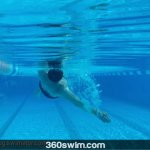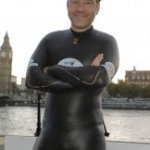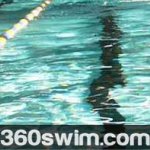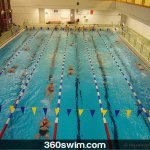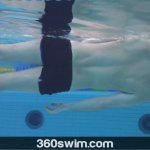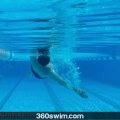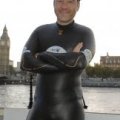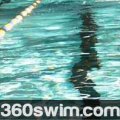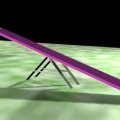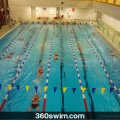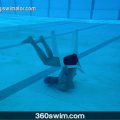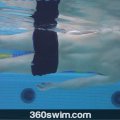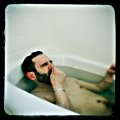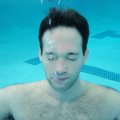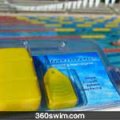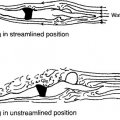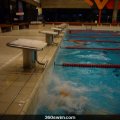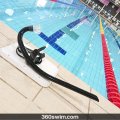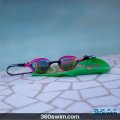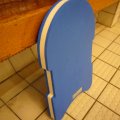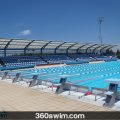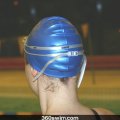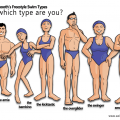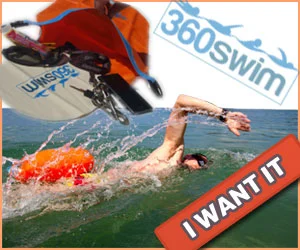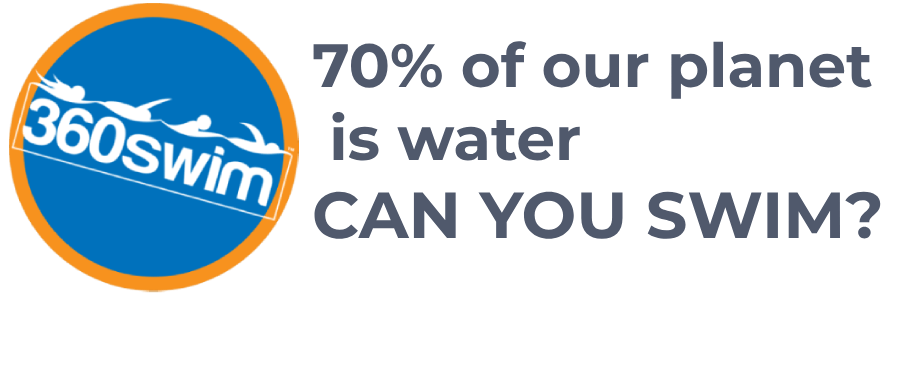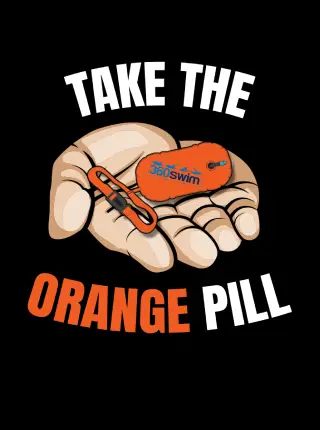HOW TO IMPROVE BODY ROTATION IN FREESTYLE AND BACKSTROKE
Introduction: Why Posture Matters in Swimming
When it comes to swimming efficiently, technique trumps brute strength. One of the most important yet often misunderstood elements of technique is body posture. In other words, how you hold and move your body in the water.
Whether you are swimming freestyle or backstroke, your posture affects everything: your streamline, breathing rhythm, kick efficiency, and overall speed. Many beginner swimmers focus on arm strokes and breathing patterns, but forget that how your body moves as a whole is what ties it all together.
In this post, I will clear up a common misconception: should your hips stay flat or rotate when swimming? Let's dive in.
Quick Jump To:
- Should Hips Stay Flat in Freestyle and Backstroke?
- Benefits of Proper Rotation
- Common Mistakes: Twisting vs. Rotating
- Tips and Drills to Practice Efficient Rotation
- Backstroke: Same Principle, Different Orientation
- Conclusion: Unlocking Better Swimming with Good Mechanics
- FAQ
Should Hips Stay Flat in Freestyle and Backstroke?
Short answer: No, your hips should not stay flat throughout your stroke - in either freestyle or backstroke.
Instead of keeping the hips pointing straight down (in freestyle) or up (in backstroke) the whole time, your body should rotate as a unit - from your shoulders down to your hips around your centerline. This movement isn't twisting from the upper back while keeping the lower body rigid. It's a full-body rotation, side to side, that happens with every stroke cycle.
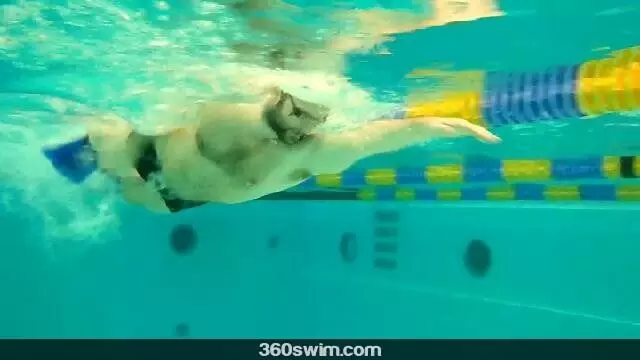
Think of your body like a log rolling gently in the water. You rotate slightly onto one side during the pull, then transition through a brief flat position, and rotate onto the other side. Your hips follow this motion - they're not passive passengers. Hips don't lie :).
Whole-body rotation means that your entire torso (from shoulder to hips) rotates together around your spine as you swim. It's not just the arms reaching forward or the shoulders rolling over, your core and hips need to participate in that movement to create a fluid, connected stroke.
In freestyle, this rotation typically reaches about 30 to 45 degrees to each side. You're not rolling all the way onto your side, but you're not staying flat either. Backstroke works the same way, just flipped on your back.
Why does this matter?
Proper rotation:
-
Increases your stroke length by allowing a better reach and catch.
-
Engages larger muscle groups (like your lats and core) for more powerful pulls.
-
Reduces shoulder strain by distributing the movement across the whole body.
-
Improves body alignment, helping you stay streamlined and minimize drag.
Think of it like dancing with the water. The better your rhythm and body awareness, the smoother and more efficient you'll move.
So rather than trying to keep your hips still, focus on allowing them to roll naturally in sync with your stroke. It might feel strange at first, especially if you've been swimming flat, but once it clicks, your swimming will feel smoother, stronger, and much more efficient.
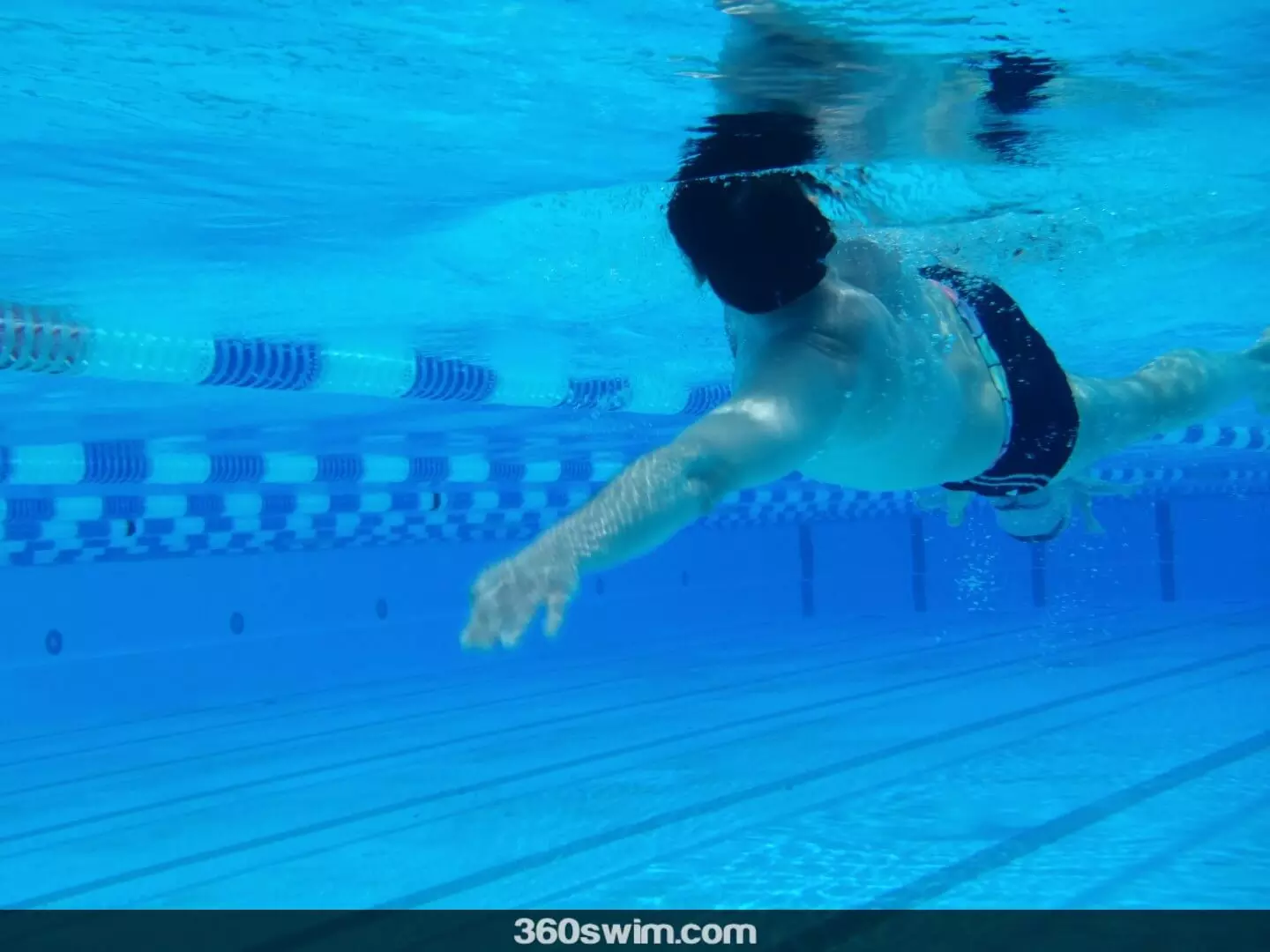
Benefits of Proper Rotation
When you rotate well, everything about your swimming gets better. Here are some of the key benefits of practicing and mastering proper body rotation in more detail:
- Longer, more efficient strokes
A good side-body extension allows you to reach farther with each arm stroke without over-stretching or muscling it. You glide better, pull more water, and waste less energy.
- Improved breathing technique
Rotating the body makes it easier to breathe to the side without lifting your head (especially if your neck is not very flexible). This keeps your body smaller in the water and reduces resistance during the breath.
- More powerful pull
When your body rotates, your arms can engage the latissimus dorsi and other strong back and core muscles, making each pull more effective. Allowing you to connect the pull with the hip drive, therefore, producing more power.
- Better balance and reduced drag
Staying flat often leads to wiggling hips or scissoring legs, which create drag. When you rotate smoothly, your body maintains a narrow, torpedo-like profile in the water.
- Lower injury risk
Proper rotation distributes stress more evenly, reducing strain on your shoulders and neck, which are common injury zones for swimmers who overreach or stay too flat.
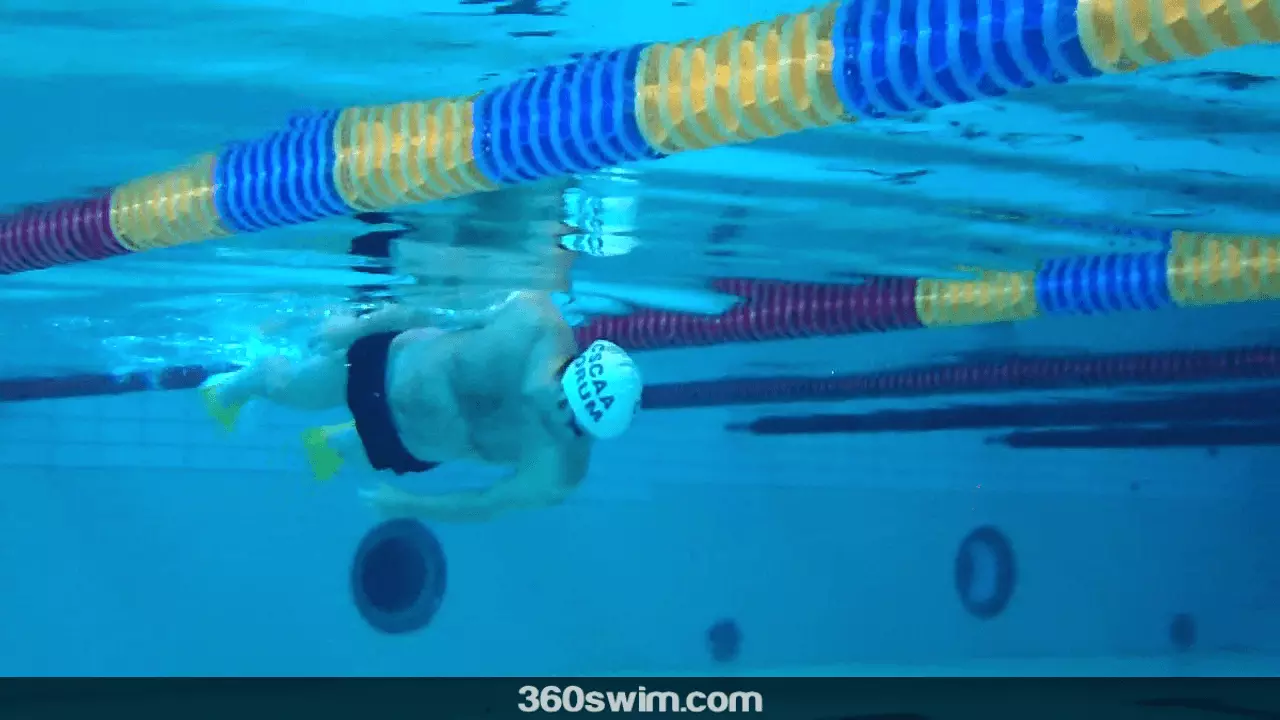
Common Mistakes: Twisting vs. Rotating
Many beginner swimmers hear "rotate your body" and accidentally take it to mean "twist your shoulders" - but this can lead to poor technique, inefficiency, and even shoulder pain.
Let's break down a few common mistakes when trying to apply body rotation, and what to do instead.
❌ 1. Twisting the upper body while leaving hips behind
This is probably the most common error. You rotate your shoulders but keep your hips flat, creating a disconnected motion. This kind of torso twist puts stress on your spine and doesn't help your stroke at all.
✅ Fix: Rotate your torso as a whole unit - shoulders, ribs, hips - all move together. Your belly button and chest should face slightly to the side at the same time, not independently. Think of showing your belly button to each side. Or pretend your hips are like ice skate blades, gliding from one edge to the other.
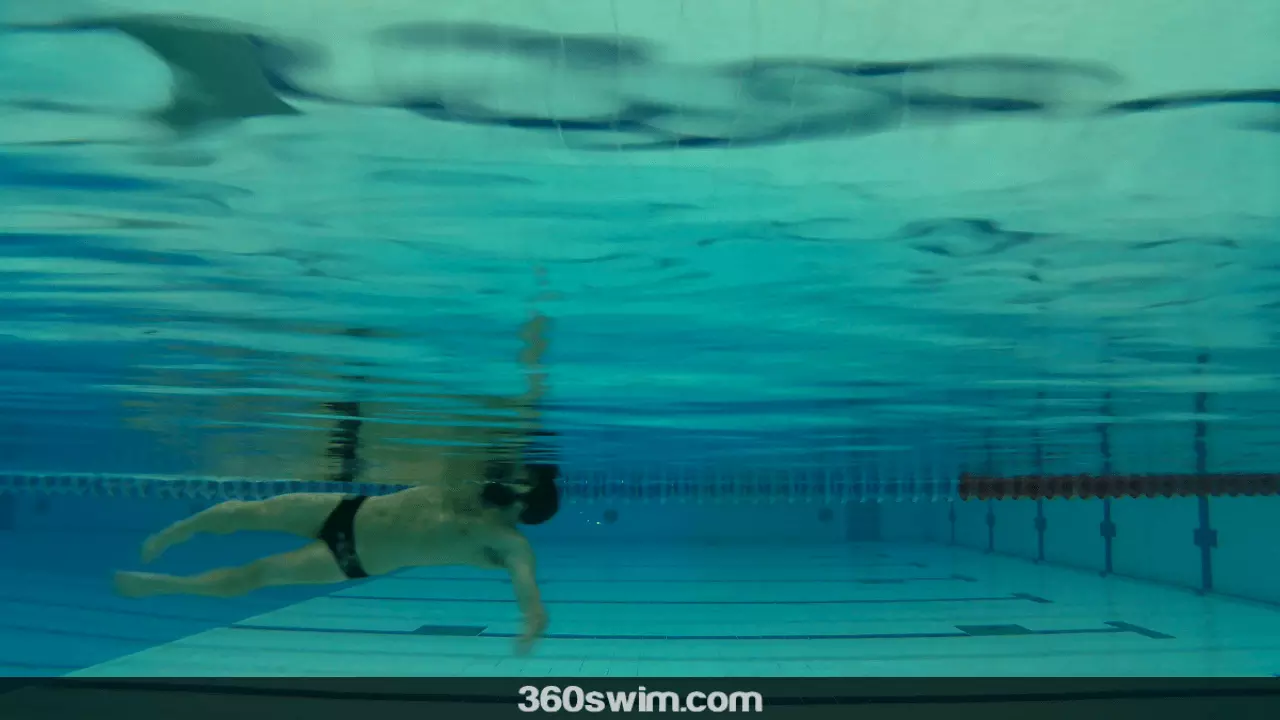
❌ 2. Over-rotating onto your side
Yes, rotation is important, but rolling too far onto your side (especially past 60°) can throw off your balance, bring your recovery arm past your body line, and make it harder to catch water effectively.
✅ Fix: Aim for a controlled rotation of about 30-45 degrees. You should feel like you're swimming on your side a little, not entirely. I know, easier said than done! Check later in the article for exercises that can help.
❌ 3. Pausing or locking at full rotation
Some swimmers reach the peak of their rotation and then freeze for a moment - usually while breathing - before continuing. This creates rhythm breaks and leads to a jerky stroke.
✅ Fix: Think of rotation as part of a continuous flow, not a stop-and-go movement. Your stroke and rotation should be synchronized and smooth, with no pauses.
❌ 4. Leading rotation from the head or shoulders only
It's easy to focus on reaching and turning your head to breathe, and forget the rest of your body. The result: your spine torques, your rhythm breaks, and your lower body loses control.
✅ Fix: Lead the rotation from your core, not your head. Your head stays aligned with your spine, and the whole body rolls together. Breathe as part of the body roll - not instead of it.
By being aware of these common pitfalls and correcting them early, you'll build a stroke that's smoother, more connected, and more sustainable.
Tips and Drills to Practice Efficient Rotation
Improving body rotation isn't about forcing your body to twist more - it's about developing, balance, rhythm, control, and awareness. Below are practical tips paired with drills to help you feel the right movement and integrate it into your stroke.
🔹 Tip 1: Keep your head still and aligned with your spine When the head moves independently, the body loses balance and rotation becomes jerky.
✅ Drill: Head-Lead Body Rotation (aka "balance drill") Arms at your sides, face down looking at the bottom of the pool (or snorkel on), and gently rotate side to side using only your body - no arm strokes. This drill trains controlled, head-aligned rotation driven by the torso.
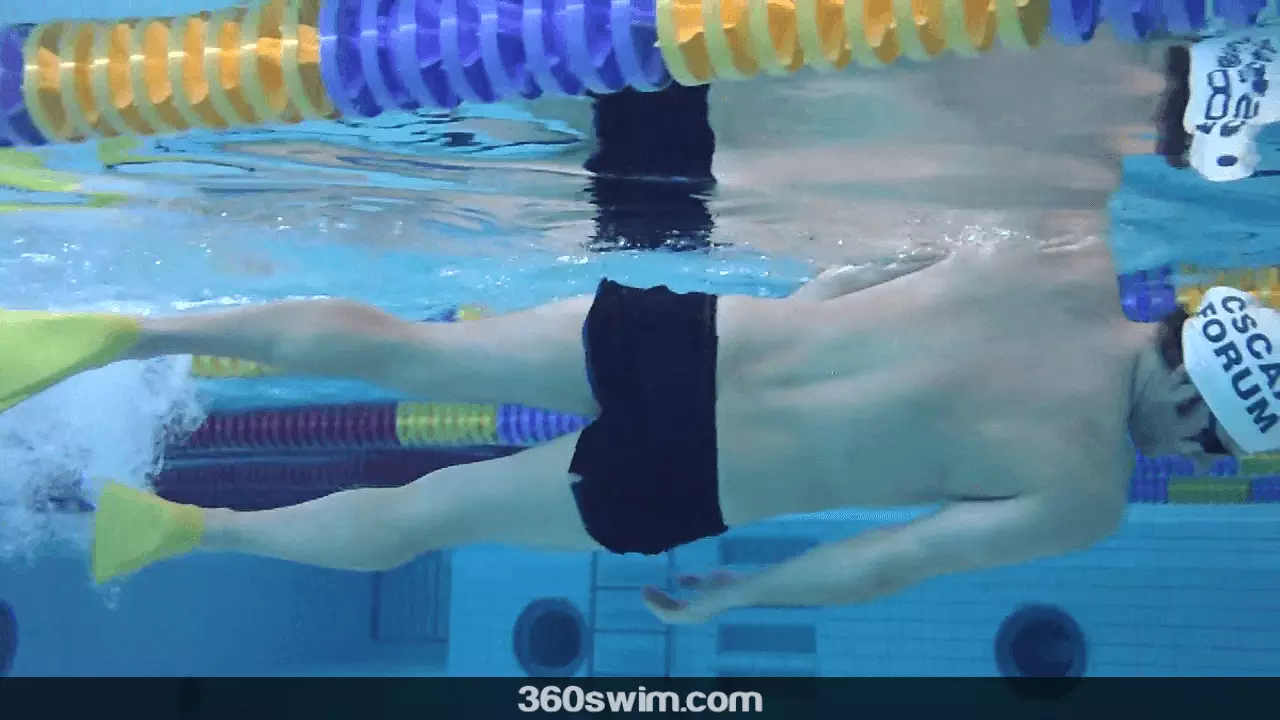
🔹 Tip 2: Feel your body line on each side To rotate well, you need to feel what it's like to swim on your side and be comfortable to balance in this position, not flat on your stomach.
✅ Drill: Side-Kick with Bottom Arm Extended Kick in a streamlined position on your side, with your lower arm extended and your face down or slightly turned. Hold this posture and feel your balance. Switch sides every 25m. It builds awareness of side-body positioning and helps clean up over-rotation.
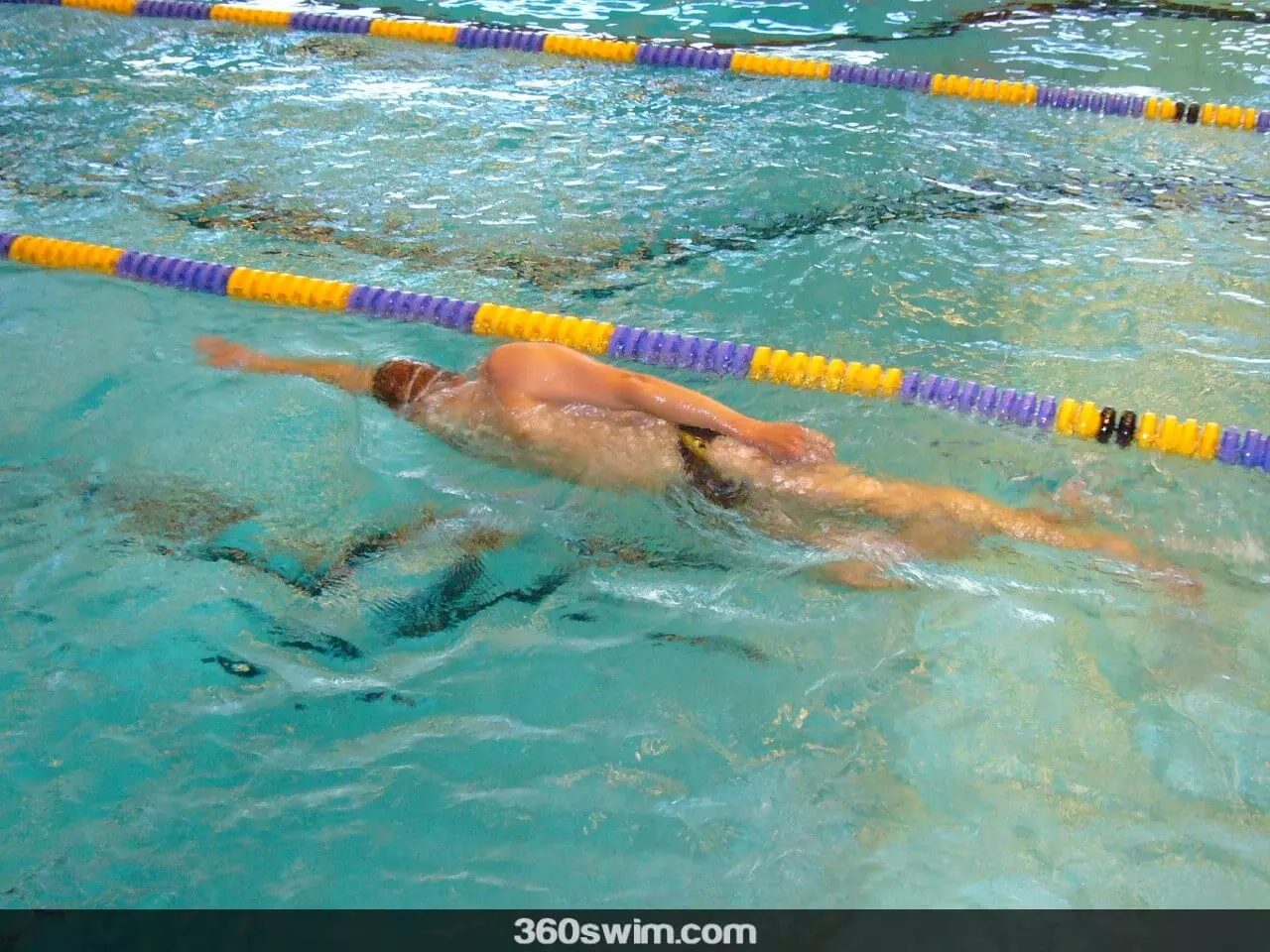
🔹 Tip 3: Engage your core - not just your shoulders Many swimmers overuse their shoulders and forget the middle of their body. Good rotation comes from the hips and core, not from the arms trying to "pull harder".
✅ Drill: 6-Kick Switch Start in a side-kick position (one arm extended, one by your side), kick six times, then bring the arm by your side towards your chest and spear it forward. At the same time, move the extended arm backwards and switch to the other side. Important: keep your arms underwater (we are not swimming yet, just rotating). Focus on using your hips and core to drive the rotation, not just the arms. Add a snorkel to remove breathing distractions.
🔹 Tip 4: Build smooth timing between stroke and roll Rotation should match your pull timing - not lag behind or lead too early.
✅ Drill: Single-Arm Freestyle with Rotation Focus Swim freestyle using only one arm; keep the non-working arm by your side. Focus on rotating your body with each pull and keeping the timing smooth. This isolates the rotation and helps you coordinate the stroke rhythm. The main mistake here is that swimmers think of this drill as side-stomach, side-stomach type of movement. Similar to a limp walk or galloping horse. However, you also have to remember the other side, so the rhythm is more like side-stomach-side, side-stomach-side, where you rotate to both sides evenly - even though only one arm is moving. Regarding breathing, you always breathe to the arm that is moving, so your extended arm serves as your support.
🔹 Tip 5: Make it continuous - no pauses Your rotation should be part of a flowing stroke, not a stop-start motion.
✅ Drill: Catch-Up Drill with Emphasis on Flow Swim freestyle but only begin your next stroke when both hands are together in front. This gives you time to focus on each rotation and how it fits into the stroke cycle. Try not to pause - just glide, rotate, and go. Feel free to grab a small pencil or some object in your hands and hand it over to the other hand when they meet upfront.
🔹 Tip 6: Practice rotation without the distraction of arms or breathing Sometimes it's easier to improve rotation by isolating it completely from your stroke. Practicing body roll in a simplified, stationary way helps you build awareness and balance before adding arm movement or breathing.
✅ Drill: Stationary Streamline Roll with Pullbuoy While floating in place with a pullbuoy between your legs, hold a tight streamline and gently roll your body from one side to the other by using your core muscles. Try to pause briefly on your side and see if you can hold your balance and not fall over to your back. Then roll back to the other side. Keep your head still, eyes down, and core engaged. The goal is to feel how your whole body rolls together as a unit while staying streamlined.
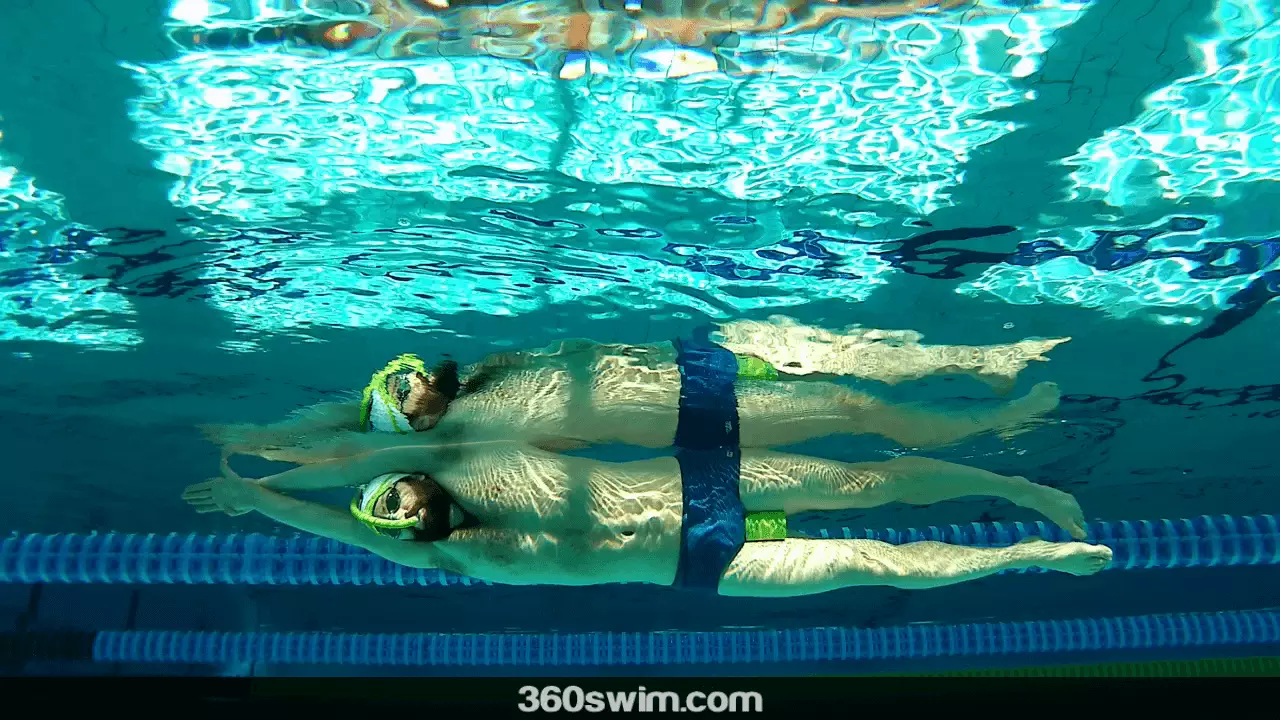
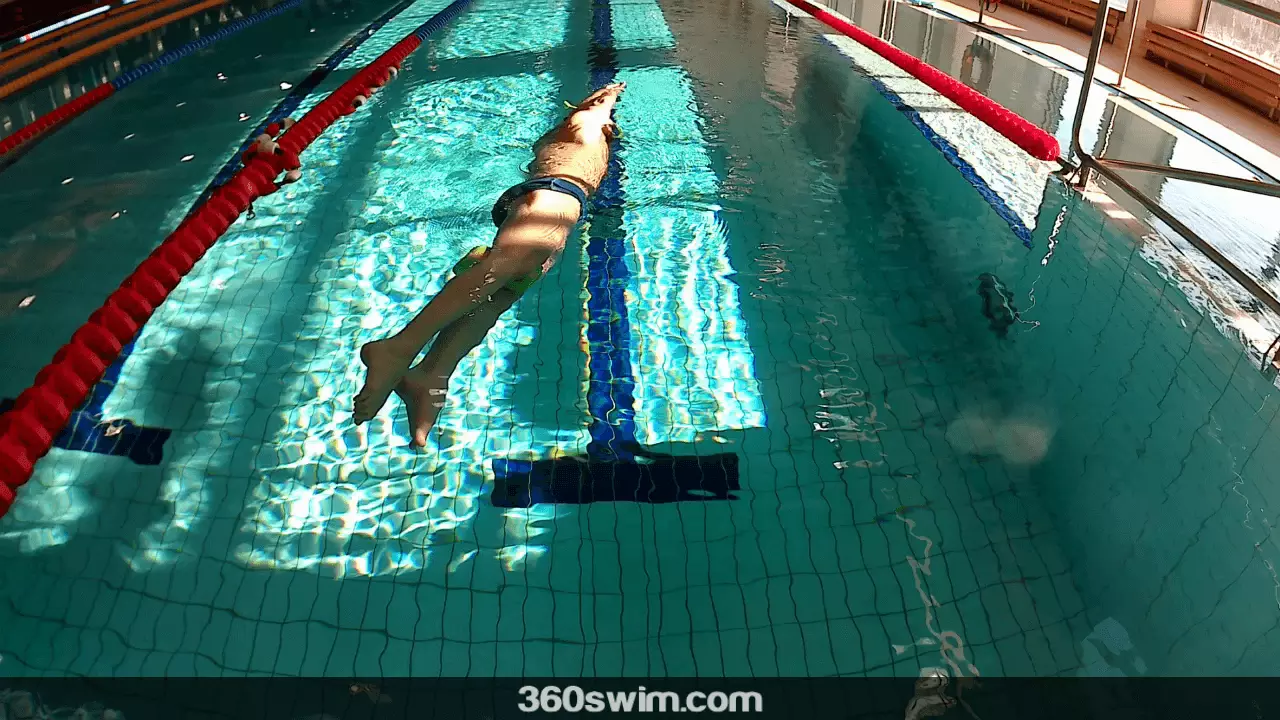
🔹 Tip 7: Train your ability to return to side balance after flattening out One of the harder parts of rotation is not just rolling onto your stomach, but getting back to your side with control. Many swimmers lose their hip position here and end up flat without realizing it.
✅ Drill: Reverse Recovery Roll Start on your side with both arms down by your sides. Begin a simulated freestyle recovery by sliding one arm forward (as if you're about to start a stroke), allowing your body to naturally rotate onto your stomach. Then, without using the other arm, reverse the exact same movement you just did: pull the extended arm back toward your hip and at the same time roll your body back onto your side.
This drill is deceptively difficult. You'll feel how challenging it is to pull your hips and torso back into a side-lying position once they've flattened out. Focus on using your core, not your arms, to initiate the rotation. Add fins if needed to keep position in the water.
🔹 Tip 8: Connect arm extension with opposite hip rotation A key part of efficient swimming is learning how the body works as a system. When one arm extends forward, the opposite hip should help drive the rotation - not resist it.
✅ Drill: Backwards Freestyle with Counter-Rotation Focus Swim slowly backwards (reverse freestyle) with a strong focus on rotation mechanics. As your left arm pushes forward underwater, allow your right hip to rise from flat position to the surface. Then switch. The movement is slow and controlled - you're not trying to go fast, you're trying to feel the opposition between arm and hip.
🎥 Watch Backwards Freestyle Drill
This drill trains coordination, builds core control, and helps you understand how to rotate the hips to support arm movement rather than fight against it. It's also a great way to challenge your balance and proprioception in the water.
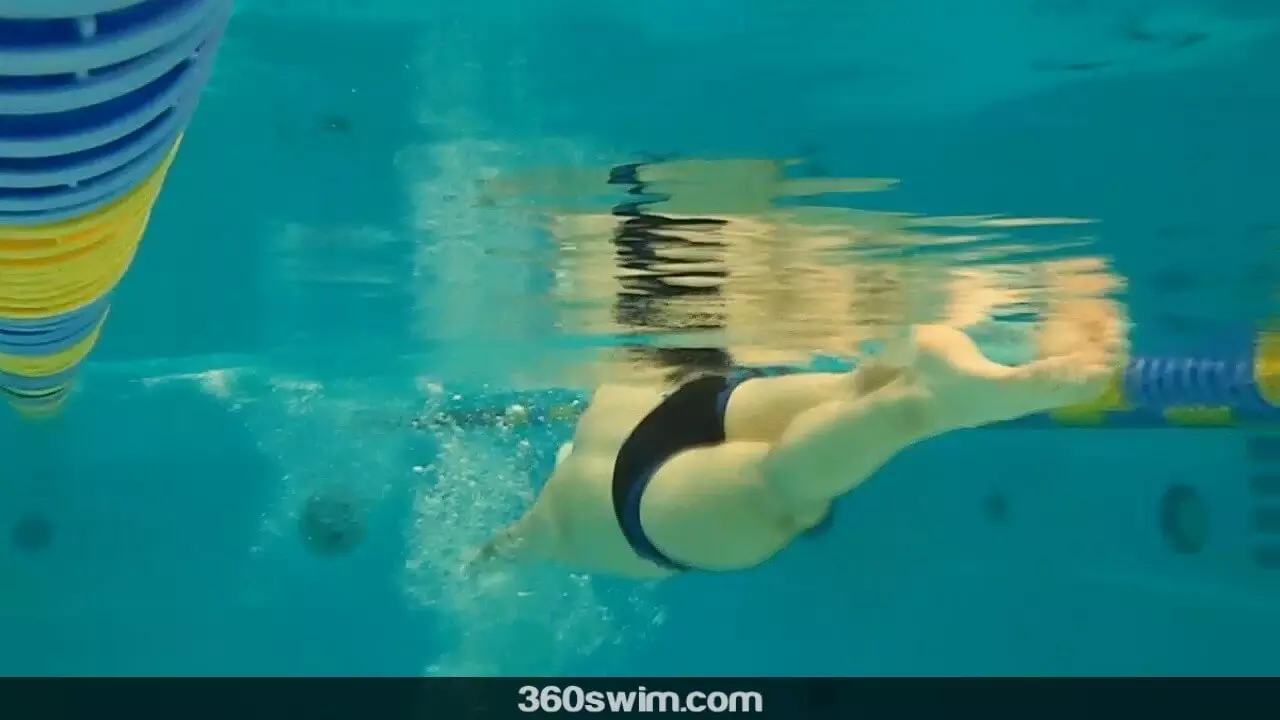
Try including 2-3 of these drills per session - even just 10-15 minutes and you'll start to feel a smoother, more natural rotation develop in your stroke. If it is tough to move forward, because your kick is not efficient, feel free to use fins to help with that.
Backstroke: Same Principle, Different Orientation
Just like in freestyle, backstroke relies on controlled whole-body rotation. The only difference is that you're facing upward instead of downward. But the principle remains the same: your shoulders, ribs, and hips rotate together around your spine to create an efficient, connected stroke.
What many swimmers get wrong in backstroke is staying flat on their back and trying to muscle through the stroke with just their arms. This limits power, reduces reach, and increases drag.
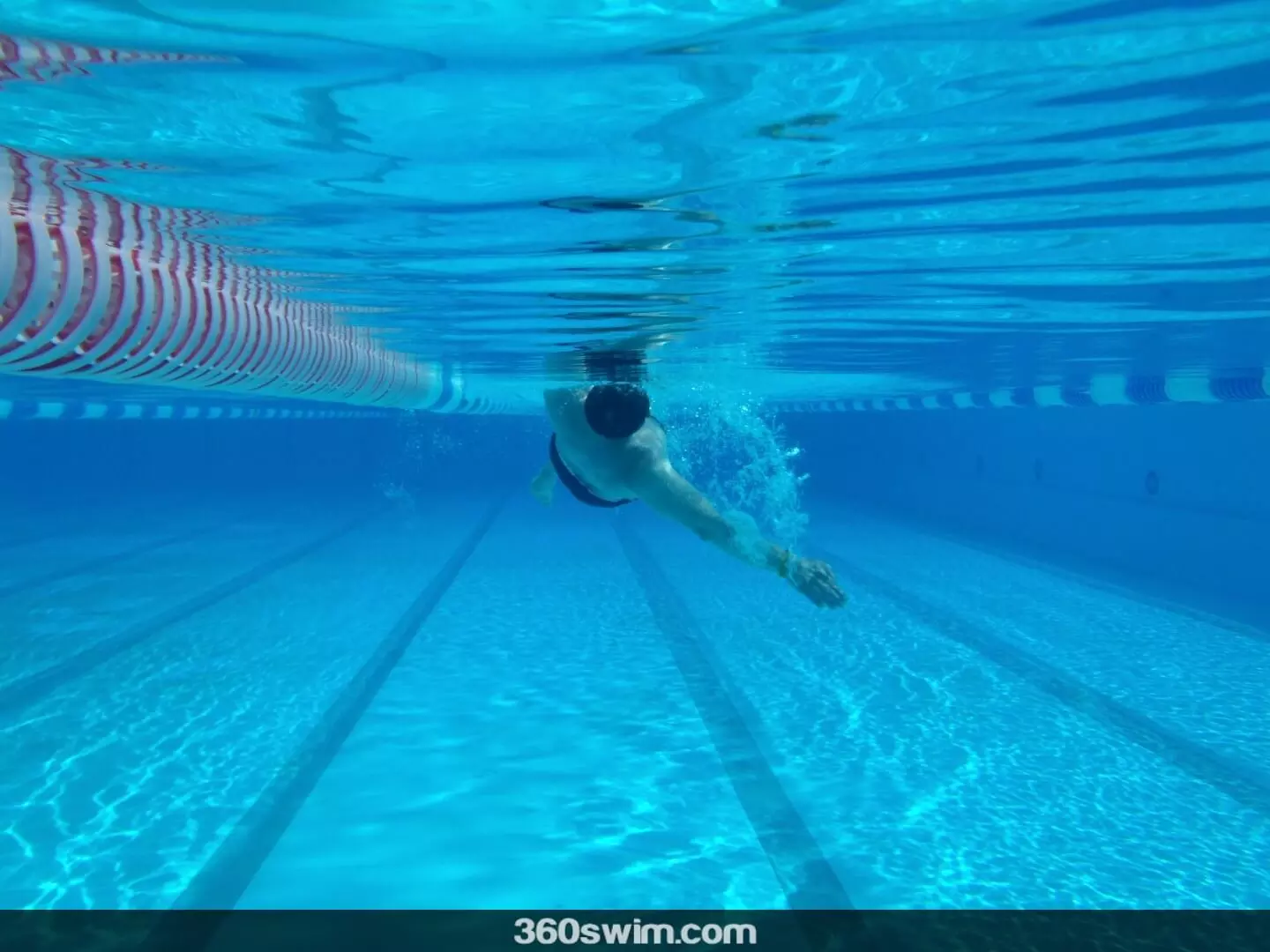
Instead, your goal should be to roll from one side of your body to the other, using your core and hips to support the movement of your arms.
Here's what to keep in mind:
-
When your right arm is pulling, your right side should be rotated down slightly, and your left side should be rotated up.
-
As your right arm begins the underwater pull, your left arm should already be recovering through the air, and your left hip starts rotating downward to help drive the stroke. This rotation isn't just passive. It's part of the propulsion. Your hips and torso roll together, leveraging your core muscles to support the pull. By the time the rotation finishes, the recovering left arm is already entering the water, and the body is rotated to the left side - ready for the next catch.
-
Just like in freestyle, the rotation angle should be around 30-45 degrees - not completely on your side, but definitely not flat.
To improve backstroke rotation, you can apply many of the same drills you used for freestyle - just flipped. For example:
-
6-Kick Switch works beautifully on your back.
-
Single-Arm Backstroke helps isolate the rotation movement. You can vary the rhythm, for example: 1 left, 2 right, 3 left, 2 right, 1 left arm stroke to challenge coordination and balance.
-
You can also try backstroke catch-up with a slight pause to feel the timing of your roll.
The key is to stay relaxed and allow your body to roll smoothly from side to side, without forcing it. And as always, your hips are part of the motion, not just your arms.
Conclusion: Unlocking Better Swimming with Good Mechanics
Good body rotation is one of the most important and overlooked parts of efficient swimming in both freestyle and backstroke. It's not about forcing big movements or twisting awkwardly. It's about building balance, awareness, control, and rhythm through your core, not just your arms.
Here are a few key takeaways as you work on improving your rotation:
-
Go slow. Speed masks flaws. Slowing down your stroke helps you feel what your body is doing and where it might be out of sync. Precision always comes before power.
-
Exaggerate rotation in drills. While proper stroke rotation is around 30-45 degrees, in drills it can help to go much further, even close to 90 degrees. This helps you learn balance on your side and build full-body awareness.
-
Be patient and consistent. It takes repetition to make good movement patterns automatic. You might feel awkward at first, but that's a sign you're learning something new. Stick with it.
The goal is not to add more effort to your stroke. The goal is to use your body more effectively so swimming becomes smoother, stronger, and more sustainable over time.
Work rotation drills into your warm-ups, technique sets, or cooldowns. Even just 10-15 minutes per session makes a difference. Your shoulders will thank you, and your stroke will start to feel easier, not harder.
Frequently Asked Questions
Should you rotate your hips when swimming freestyle?
Yes, your hips should rotate along with your shoulders and torso as part of a whole-body roll. This helps improve efficiency, reduces drag, and engages your core muscles during the stroke.
What is the ideal body rotation angle in freestyle and backstroke?
Around 30-45 degrees to each side. You're not completely on your side, but definitely not flat. In drills, it's okay to exaggerate this angle to train balance and awareness.
Why does my stroke feel awkward when I try to rotate more?
You might be over-rotating, pausing at full rotation, or rotating your shoulders without involving your hips. Whole-body rotation should feel smooth and continuous - not forced.
What are the best drills to improve rotation?
Some of the most effective drills include side-kick with bottom arm extended, 6-kick switch, head-lead body roll, and single-arm swimming. These help isolate rotation and connect it to your core.
Is it okay to use fins for rotation drills?
Yes. Fins can help you maintain forward movement and better body position, especially if your kick is weak or you're still learning the drills.
Should I use a snorkel for rotation drills?
Yes, a front-mounted snorkel is very helpful. It removes the need to turn your head to breathe, allowing you to focus entirely on your body position, rotation, and alignment.
Why do I lose balance when rotating in the water?
Most likely you're over-rotating, holding your breath, or your kick isn't steady enough. Try side-kick drills with fins, focus on core stability, and keep your head still. Also, it could very well be that your core muscles need more training.
How often should I do rotation drills?
Even just 10-15 minutes per session, 2-3 times per week, can make a noticeable difference. Include them in warm-ups, technique sets, or as cooldowns to build muscle memory without fatigue.
 LNURL1DP68GURN8GHJ7URP0YHRXD3SWDMKJMFWVDHK6TMVDE6HYMRS9A4HSCNCWFXSH3NN0H
LNURL1DP68GURN8GHJ7URP0YHRXD3SWDMKJMFWVDHK6TMVDE6HYMRS9A4HSCNCWFXSH3NN0H